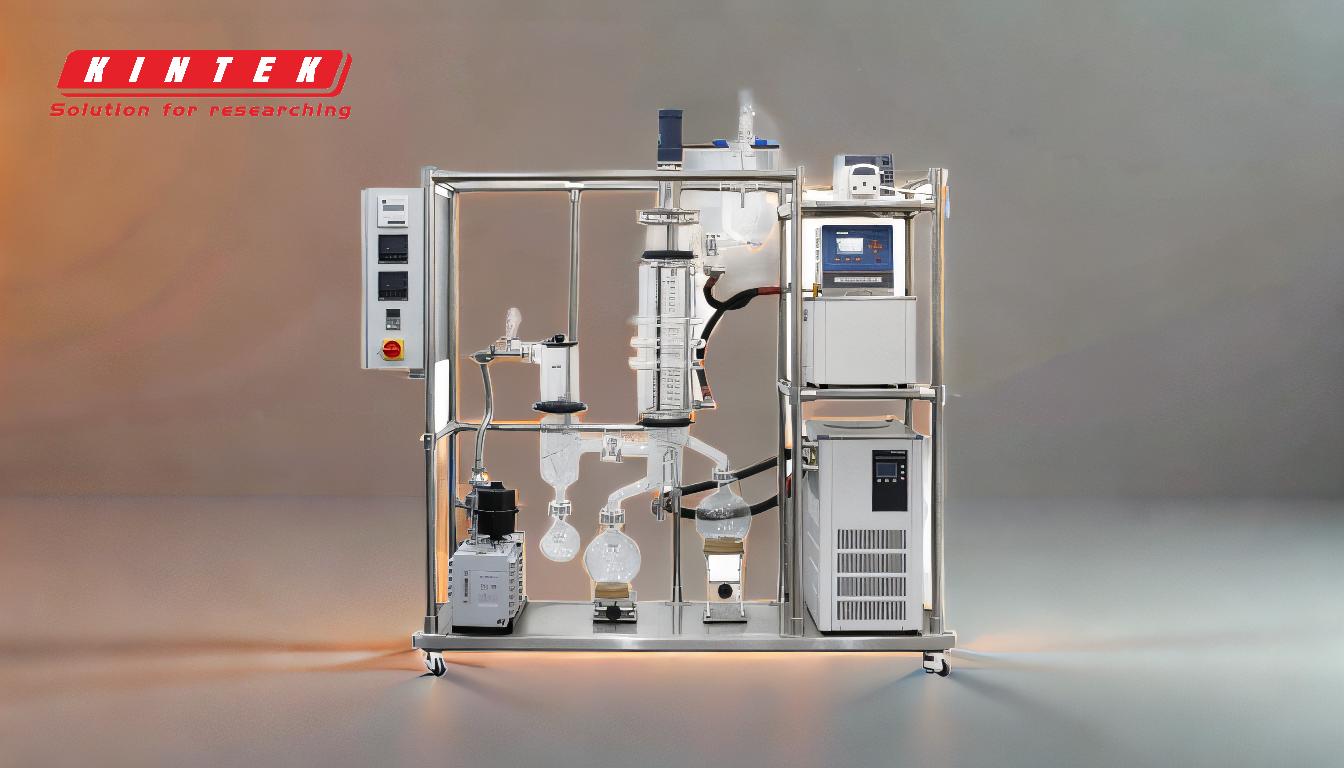Distillation is a widely used separation technique that leverages differences in the boiling points of components in a mixture to achieve separation. By heating the mixture, the more volatile components vaporize first, while the less volatile ones remain in liquid form. The vapor is then condensed back into a liquid and collected, resulting in the separation of components. This process is applicable to both simple and complex mixtures, with variations like simple distillation, fractional distillation, and vacuum distillation tailored to specific separation needs. Simple distillation is ideal for mixtures with significant boiling point differences, while fractional distillation is used for mixtures with closer boiling points. Vacuum distillation lowers the boiling points of components by reducing pressure, enabling separation of heat-sensitive substances.
Key Points Explained:

-
Principle of Distillation:
- Distillation relies on the differences in boiling points of the components in a mixture. When heated, the component with the lower boiling point vaporizes first, while the higher boiling point component remains in the liquid phase.
- The vapor is then condensed back into a liquid and collected separately, achieving separation.
-
Simple Distillation:
- Simple distillation is a single-stage process used for mixtures where the boiling points of the components differ by at least 158°F (70°C).
- It is ideal for:
- Separating liquids from nonvolatile impurities (e.g., distilling water to remove salt).
- Producing nearly pure substances (e.g., homemade perfumes, liquor, or soaps).
- The process involves boiling the mixture, capturing the vapor, condensing it, and collecting the distillate.
-
Fractional Distillation:
- Fractional distillation is used for mixtures with components that have closer boiling points.
- It involves multiple vaporization-condensation cycles within a fractionating column, which contains packing material to enhance separation.
- As the vapor rises through the column, it cools, condenses, and re-vaporizes repeatedly, improving the purity of the distillate with each cycle.
- This method is commonly used in industries such as petroleum refining to separate crude oil into its various components (e.g., gasoline, diesel, kerosene).
-
Vacuum Distillation:
- Vacuum distillation is employed for heat-sensitive substances or those with very high boiling points.
- By reducing the pressure inside the distillation apparatus, the boiling points of the components are lowered, allowing separation at lower temperatures.
- This technique is particularly useful in chemical and pharmaceutical industries to purify compounds without thermal degradation.
-
Role of Equipment in Distillation:
- Heating Source: Provides the energy needed to vaporize the components.
- Distillation Flask: Holds the mixture and allows controlled heating.
- Condenser: Cools the vapor back into a liquid.
- Fractionating Column: Enhances separation in fractional distillation by providing surfaces for repeated condensation and vaporization.
- Receiver: Collects the purified distillate.
-
Applications of Distillation:
- Water Purification: Simple distillation is used to produce pure drinking water by removing impurities and salts.
- Alcohol Production: Distillation is essential in producing spirits like whiskey, vodka, and rum.
- Petroleum Refining: Fractional distillation separates crude oil into useful products like gasoline, diesel, and jet fuel.
- Chemical Industry: Vacuum distillation is used to purify heat-sensitive chemicals and pharmaceuticals.
-
Factors Affecting Distillation Efficiency:
- Boiling Point Difference: Larger differences make separation easier and more efficient.
- Packing Material in Fractionating Columns: Influences the number of vaporization-condensation cycles and the purity of the distillate.
- Pressure and Temperature Control: Critical in vacuum distillation to prevent thermal degradation of sensitive components.
By understanding these key points, a purchaser of distillation equipment or consumables can make informed decisions about the type of distillation process and equipment needed for their specific application.
Summary Table:
| Aspect | Details |
|---|---|
| Principle | Separates components based on boiling point differences. |
| Simple Distillation | Ideal for mixtures with boiling points differing by ≥158°F (70°C). |
| Fractional Distillation | Used for mixtures with closer boiling points; employs a fractionating column. |
| Vacuum Distillation | Lowers boiling points by reducing pressure; ideal for heat-sensitive substances. |
| Key Equipment | Heating source, distillation flask, condenser, fractionating column, receiver. |
| Applications | Water purification, alcohol production, petroleum refining, chemical industry. |
| Efficiency Factors | Boiling point difference, packing material, pressure & temperature control. |
Discover the right distillation solution for your needs—contact our experts today!









